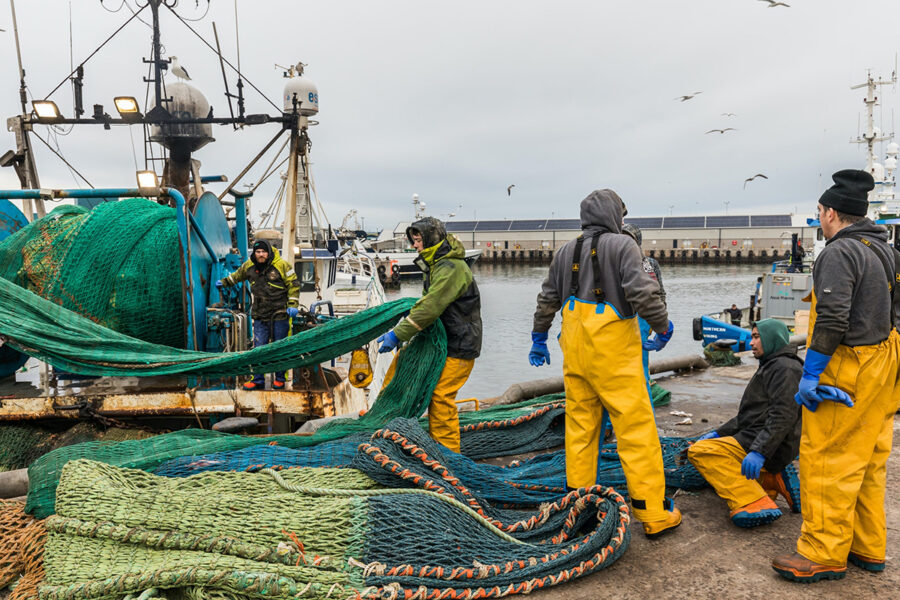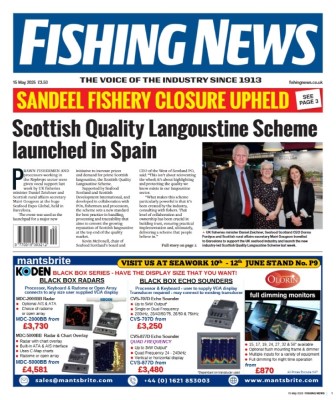The UK fishing industry is facing a significant and growing challenge in accessing skilled labour, a new report from Seafish has confirmed. The ‘2024 Employment in the UK Fishing Fleet’ report, based on data collected during Seafish’s fleet survey last summer, paints a stark picture of an ageing workforce, stiff competition from other sectors, and the impact of recent immigration policy changes.
The report highlights that less than a quarter of skippers and vessel owners surveyed rated their access to skilled labour as ‘good’ or ‘very good’. Conversely, nearly half described access as ‘bad’ or ‘very bad’.
This sentiment was most acutely felt in segments reliant on larger crews, such as scallop dredgers and Nephrops and demersal trawlers over 10m, where operators report direct consequences on days at sea and overall fishing activity. For these larger vessels, the report points out, a shortfall in crew can mean expensive boats remaining tied up, leading to lost revenue and decreased productivity across the entire seafood supply chain.
A primary driver of the labour shortage is the fishing sector’s increasingly ageing demographic. The average age of employees sampled in the 2024 survey was 44, a four-year increase from the 2021 report. Notably, vessels registered in England showed the largest proportion of workers aged over 60, predominantly owners working on static-gear under-10m and low-activity vessels.
While deckhands remain the youngest cohort on average (37 years), vessel owners average 51 years and hired skippers 40, underscoring the industry’s struggle to attract and retain younger talent and ensure a pipeline of future skippers and experienced crew.
The report sampled 927 workers across 406 vessels, revealing that 86% of the workforce was from the UK. However, non-UK workers, primarily from the Philippines, Ghana and Latvia, play a critical role, largely employed as deckhands on larger vessels, particularly in Northern Ireland and Scotland.
Gender disparity remains pronounced, with 99% of workers in the sample being male. The report acknowledges potential underreporting of onshore and unpaid roles, often filled by women, which could skew this figure. The survey suggests that these ‘other’ roles, which include vital administrative and support functions for fishing businesses, are often overlooked in official employment figures.
Beyond an ageing workforce, the report notes external pressures and legislative hurdles on the industry. Competition for new entrants from sectors like offshore wind and aquaculture is a persistent challenge. These industries often offer more predictable hours, perceived greater safety and potentially better shore-based amenities, making them attractive alternatives for those considering a career at sea.
Compounding this are recent changes to the UK’s visa system, which have made recruiting skilled overseas crew more difficult and costly. Some vessel operators in the survey noted that the transition from transit visas to the skilled worker visa system – particularly the new minimum salary threshold of £30,960 introduced in April 2024 and the English language proficiency requirements – has been profoundly disruptive.
One owner of a Nephrops vessel lamented losing experienced crew members who could not pass their English exams, forcing him to recruit less experienced replacements and impacting vessel efficiency and safety. Another demersal under-10m vessel owner highlighted losing three months of fishing activity while crew navigated the new visa process, leading to significant financial strain. The report notes that these changes have even led some vessel owners to sell or downsize their operations.
The survey found that 83% of onboard workers were employed full-time, all year round. However, nearly a fifth of the sample (185 respondents) reported having a second job, particularly owners working on static-gear under-10m or low-activity vessels. These supplementary roles, often in other maritime sectors like ferries or the RNLI, or in related seafood fields such as retail or wholesale, highlight the financial pressures faced by many within the industry.
In terms of pay, crew share remains the most common remuneration method (74%) across the UK fleet. However, 81% of non UK/EU crew were paid via fixed salaries or agency contracts, a reflection of visa conditions requiring minimum salaries.
Neil McAleese, Seafish’s head of industry workforce issues, said: “As this new report recognises, access to skilled labour is an ongoing issue for the commercial fishing sector. This issue is critical, as the shortage of labour has economic implications for both businesses and the wider economy.”
Seafish is working with industry stakeholders and the government to address these challenges. Efforts include developing and delivering training courses designed to attract new entrants, such as Commercial Fishing courses, Fisher Apprenticeships, the Diploma in Sea Fishing and the Maritime Studies – Trainee Deckhand course.
Despite these initiatives, the report notes that 11% of respondents still believe labour issues will negatively affect their future business performance, indicating the depth of the challenge and the long road ahead for sustainable recruitment.
The full report can be downloaded here.
This story was taken from the latest issue of Fishing News. For more up-to-date and in-depth reports on the UK and Irish commercial fishing sector, subscribe to Fishing News here or buy the latest single issue for just £3.50 here.
Sign up to Fishing News’ FREE e-newsletter here.
Main image courtesy of Seafish








